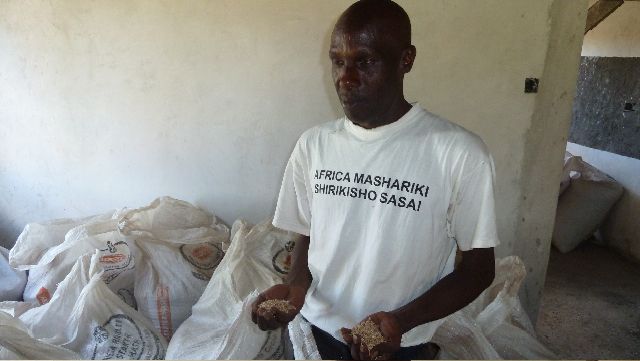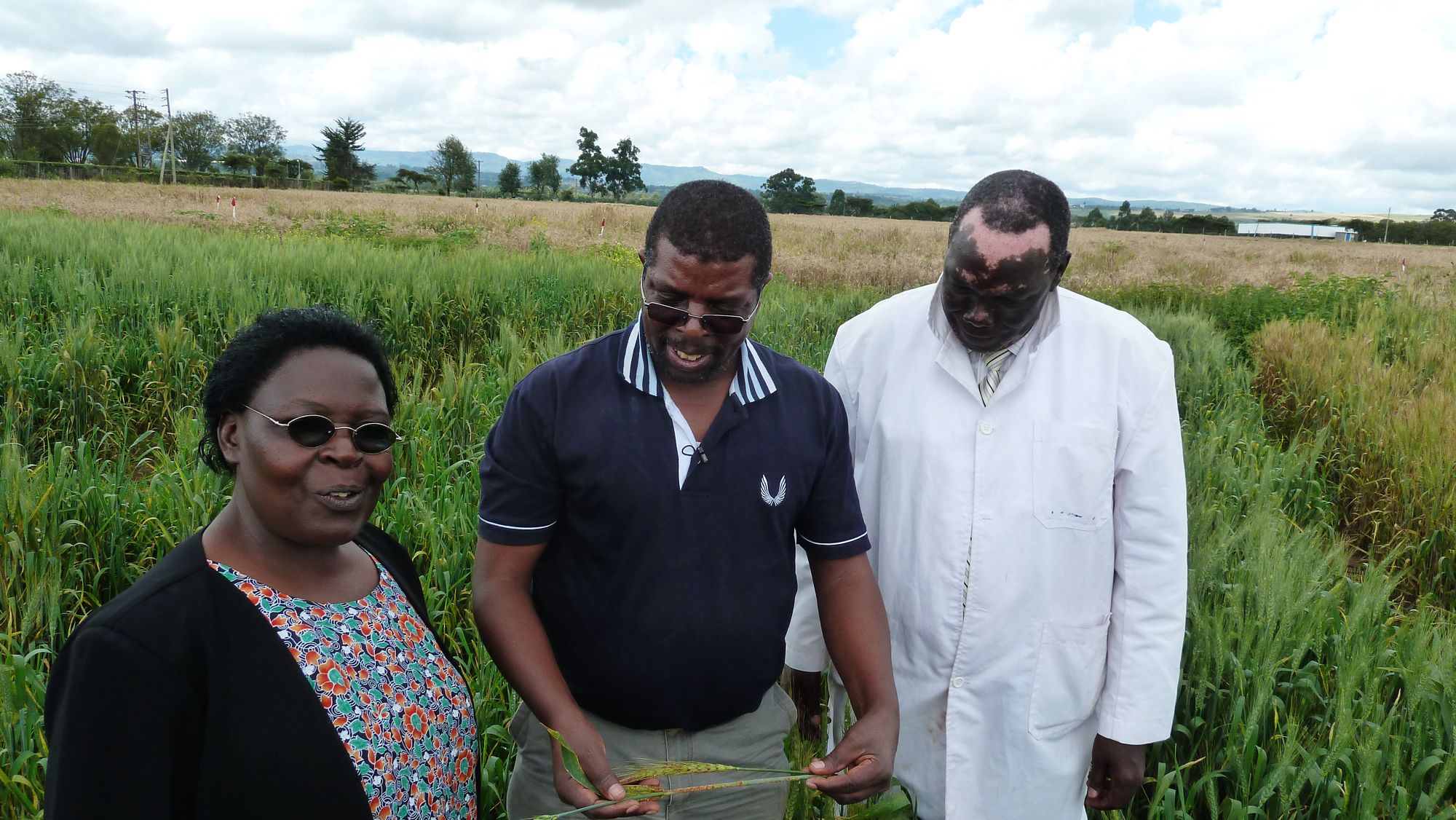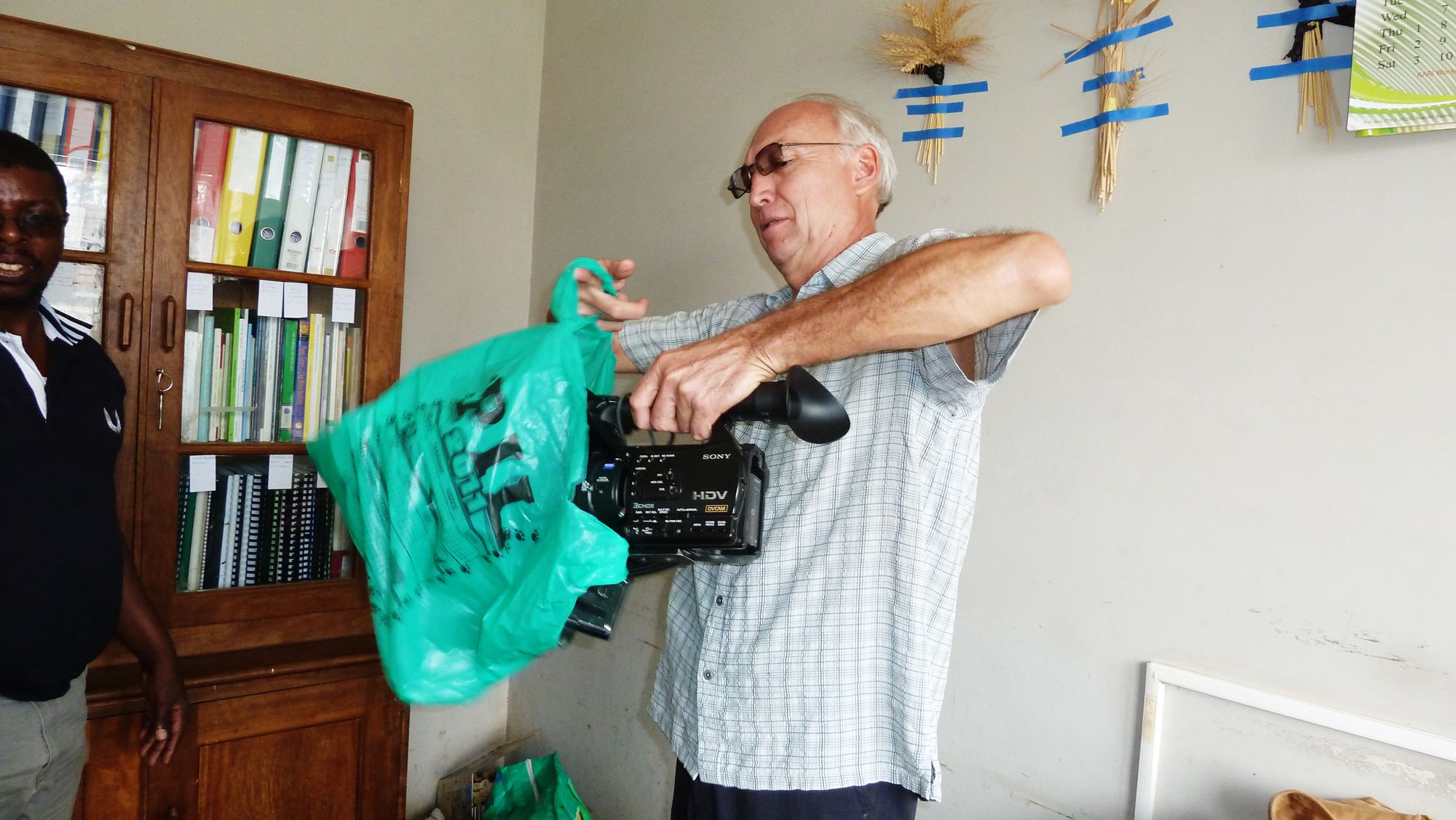Scientists say they are making promising strides in their race against UG99, a stem rust disease that, left unchecked, could wipe out eighty percent of the world’s wheat crop. But this is a science of watching plants grow. The race is a marathon and the number of farmers forced to be in it—particularly small, subsistence growers—will likely drop sharply in the years ahead. The rest will hope, pray and spray.
“Without fungicides, there would be no wheat crop in this country and other countries,” said Bruce Nightingale, whose large family-farm operation in Kenya’s Rift Valley dates back to British colonial days. Nightingale has had to apply the chemicals a half dozen times to salvage his 1,000 acres of wheat. Hundreds of his much poorer neighbors aren’t so fortunate.
The amount you spray depends “on the kind of money you have,” says Samuel Langat, who planted ten acres of wheat and measures his yield in (roughly) 50-pound bags. He sprayed twice and got about 12 bags per acre from his most recent harvest, about half the yield he got before “the rust came.”
Stem rust dates back millennia, almost to the time when wheat was first domesticated. It is a fungus that clings to the stalk of the wheat plant, draining it of nutrients that are needed to produce grain. It was brought under control in the 1950s when scientists led by Norman Borlaug hit the genetic jackpot. In work that won him the Nobel Peace Prize, Borlaug created hybrid crops with high yields and strong disease resistance and brought bountiful harvests to places where famine had been common.
That success also bred complacency, says Brian Steffenson, a crop scientist at the University of Minnesota. The rust organism continued to evolve and mutate until it emerged, potent as ever, in Uganda in 1999 (thus the name UG99). UG99 has proven capable of destroying eighty percent of all the world’s wheat varieties, including those created by Borlaug.
“The moral of the story for stem rust is to be ever vigilant,” Steffenson said. “We can’t have the arrogance to think that we’re going to control this disease for 60, 80 years.”
Science has gained prowess in those decades. Genes can be manipulated and transferred more precisely from one plant to another than in Borlaug’s time of educated guesses. Still, it takes at least six years to create a new, rust-resistant, high-yielding plant that is ready for commercial sale to farmers, according to Steffenson. Replacing eighty percent of all the wheat varieties in the world will take a long time, he adds.
Steffenson’s lab and others around the world have created thousands of experimental new hybrids, which are sent to a large test plot just outside the dusty hamlet of Njoro in Kenya’s Rift Valley. Here, scientists with the Kenya Agricultural Research Institute or KARI inoculate the plants with UG99 before planting them. Those that show promise are subjected to further cross breeding for qualities beyond resistance and yield. Wheat varies widely and its different uses—breads, pastas, crackers, couscous—requires specific taste characteristics.
“There is still a number of stages to go and each one requires time,” says KARI scientist Peter Njau.
A few plants—about ten percent—are resistant enough to make it to the next step: testing in “real” farmers’ fields. Bruce Nightingale has used a new variety derived from a Brazilian wheat strain. It has shown promise, but it’s still too risky to stop using chemical fungicides, he says. New hybrids that continue to pass muster must be sent for “seed multiplication” and enter the chain of commercial production and retail distribution.
Njau anticipates that it will probably be 2016 before new resistant varieties become commercially available for all of wheat’s uses around the world. Until then the big worry is where next the rust could spread. Dry, windy conditions have already blown UG99 spores across the Red Sea into Yemen and as far east as Iran. Not much farther east—in Pakistan, India and China—live more than two billion people for whom wheat is a major crop.
As I prepared to leave the KARI test plot with my colleagues, we were reminded about another, much-dreaded mode of transmission. They call it “the 747.”
I assured our Kenyan hosts that before boarding our flight home we’d take every precaution to wipe off the surfaces of our equipment and soak or discard the clothes we wore to the field. UG99 spores germinate when they’re moist and become harmless, unless they’re on a host plant stalk.
As an added layer of reassurance I noted that I was heading home to Minnesota, where no spores could survive the winter.
That drew a quick response from KARI scientist Samuel Kilonzo.
“But imagine a situation whereby you go to an airport lounge and there’s another tourist there from, maybe, Australia. And maybe those spores land on your seat.”
“And they finally get to Australia,” adds Njau. Australia, I am reminded, is one of the world’s largest suppliers of wheat and its main varieties are not resistant to UG99.
Carefully, we make sure that our clothes are thoroughly wetted down before sealing them in a plastic bag. And grudgingly, I leave a much beloved pair of hiking sandals with a surprised, and delighted, hotel bellhop.















